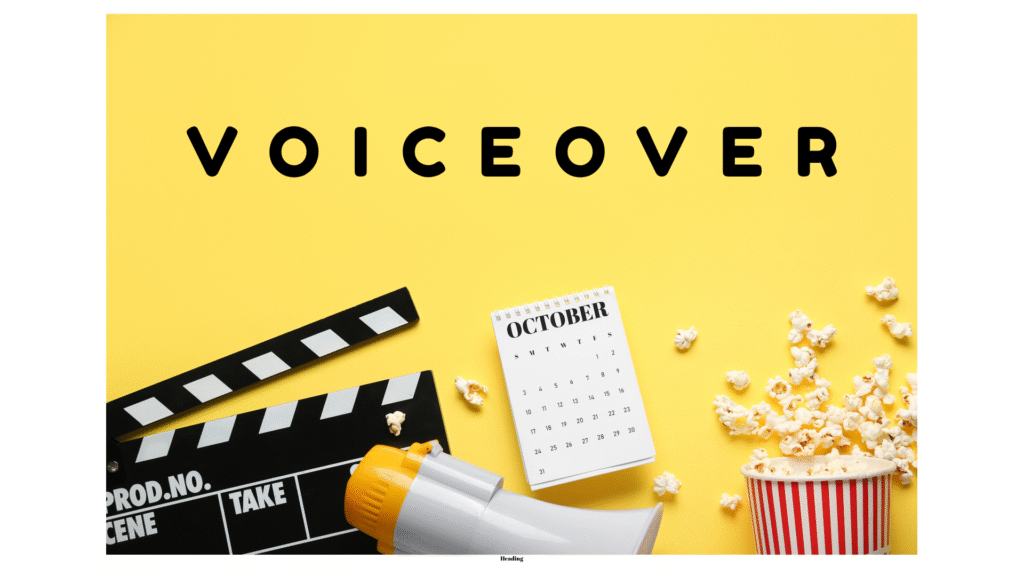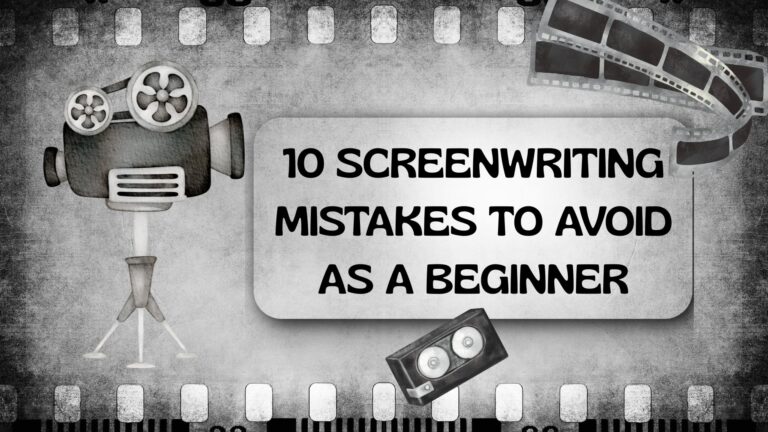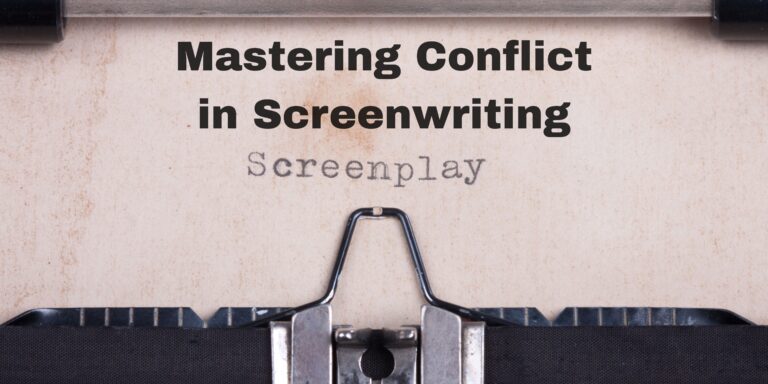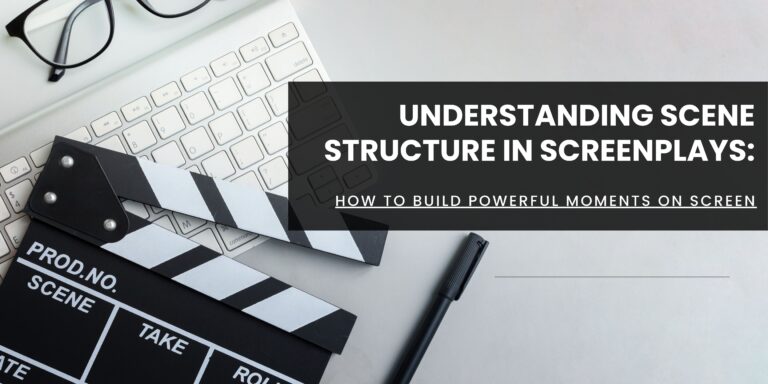Voiceover in Screenplays: Elevate Your Script with Impactful Narration
Voiceover in screenplays can define the difference between a masterpiece and a misfire. Ever notice how some films grip you with a single voice whispering truths the camera alone can’t reveal?
That’s the magic of a well-placed voiceover, a storytelling device that can elevate your script to brilliance or drag it into tired cliché.
Done right, it adds rhythm, emotion, and clarity, transforming ordinary scenes into unforgettable moments. Done wrong, it becomes dead weight.
If you’re ready to unlock the craft and give your script a voice that resonates, let’s dive into the dos and don’ts, as well as the techniques that make voiceover truly impactful.
When to Use Voiceover in Screenplays: The “Why” You Can’t Ignore
Have you ever heard the saying “don’t throw the baby out with the bathwater”? That’s precisely what happens when screenwriters dismiss voiceover in screenplays as a cheap shortcut.
In truth, when used wisely, it can be the secret sauce that transforms a story from flat to flavorful. Voiceover isn’t just a tool; it’s a character in its own right, adding depth, texture, and a touch of magic that visuals alone can’t always capture.
Read more: Mastering Conflict in Screenwriting: Unleash Magnetic Screenplay Tension
So when does voiceover shine brightest? Let’s break it down.
Adapting Source Material Without Losing Its Soul
Some stories are born from voices too distinct to fade into the background. Think of Martin Scorsese’s The Age of Innocence or Stanley Kubrick’s Barry Lyndon. Both films rely heavily on narrators to convey the wit, sarcasm, and sharp commentary of their novel counterparts.
Without the voiceover, much of that flavor would vanish like smoke in the wind. Here, the voiceover in screenplays doesn’t just echo the source; it becomes a counterpoint to what we see on screen.
It’s like hearing two versions of the same story: the characters living it versus the narrator interpreting it. That tension builds intrigue, pulling audiences deeper into the world.
Filling the Silence with Point-of-View Narration
Not every story brims with dialogue. Some, like Terrence Malick’s Days of Heaven or the sweeping landscapes of 1883 and 1923, thrive on quiet moments. In those silences, POV narration slips in like a trusted guide.
Read more: Electrifying Screenplay Plot Twist Techniques: Surprise Without Losing Your Audience
Imagine watching endless Western vistas without a word spoken. Beautiful? Yes. But meaningful? Not quite until a voice steps in, weaving poetry into the silence.
Sometimes, as in True Grit or GoodFellas, narration comes from an older, wiser self reflecting on the past. That duality, the young character we see versus the seasoned voice we hear, creates an emotional echo that lingers long after the film ends.
When the Narrator Is Delightfully Unreliable
Another trick up the screenwriter’s sleeve is the unreliable narrator. Here, the voiceover in screenplays turns into a playful accomplice. Take Forrest Gump, for example: his innocent misinterpretations, like calling Apple “some sort of fruit company”, add humor and heart to the story.
On the flip side, shows like Arrested Development use narration as a truth-teller, cutting through characters’ lies with biting wit. Both approaches prove that narration doesn’t have to mirror reality; it can twist it, question it, or poke fun at it.
Building a Voice That’s Bigger Than the Characters
In certain films, the voiceover becomes more than commentary; it’s almost a storyteller living outside the frame. This works brilliantly in “picaresque” tales such as Tom Jones, or again. These wandering, episodic adventures need a guide, and the narrator fits that role like a hand in a glove.
The takeaway? Voiceover isn’t filler. It’s a narrative device that, when done correctly, adds richness you simply can’t achieve otherwise.
As one analysis in Final Draft notes, narration works when it complements rather than competes with the visuals. Used this way, it doesn’t just tell the story; it enriches it.
Lessons from the Greats: Why Fight Club and Shawshank Wouldn’t Work Without It
Think of Fight Club. Without its razor-sharp narration, audiences would be lost in the chaos of Tyler Durden’s world. Or The Shawshank Redemption, where Red’s “I hope” monologue delivers one of the most powerful closing lines in cinema history.
These films remind us that voiceover in screenplays can be as impactful as dialogue itself. It’s not about slapping on a voice for convenience; it’s about amplifying emotion, sharpening perspective, and giving the audience an anchor in the storm.
It’s a powerful tool that can keep your audience engaged and connected to your story.
Read more: Powerful Screenplay Opening Scenes: Master the First 10 Pages with Irresistible Hook
Of course, as screenwriting wisdom suggests, “show it if you can.” But when words layered over images create an emotional punch you can’t otherwise deliver? That’s when voiceover earns its place at the table.

Voiceover vs. Narration: Knowing the Difference
If storytelling is a symphony, then the instruments of delivery matter just as much as the melody. Many writers confuse voiceover in screenplays with narration, but they’re not interchangeable.
It’s crucial to understand their differences to ensure your storytelling is as compelling as possible. Picture them as cousins, related but distinct, each bringing its own flavor to the feast.
The Technical vs. The Plot Device
It’s essential to understand that voiceover is a technical device, whereas narration is a literary device. In other words:
- Voiceover is the technique of layering a voice over visuals, often unheard by the characters.
- Narration is the storytelling role of guiding the audience through events, perspectives, or themes.
This distinction matters. Voiceover is about how the story is told, while narration is about who tells it and why.
Another important distinction is drawn between diegetic and non-diegetic sound. This helps to understand who can hear the narration: Another vital line is drawn between diegetic and non-diegetic sound:
- Diegetic Narration: Occurs within the fictional world. If the characters can hear it, like dialogue, it’s diegetic.
- Non-diegetic Narration (Voiceover): Exists outside the story world. Characters can’t hear it, but the audience can.
A clever example of this blurred line comes from Stranger Than Fiction. Harold Crick (Will Ferrell) suddenly hears his life narrated in real-time, only to discover the voice belongs to an author writing his story.
Here, the script playfully toys with both diegetic and non-diegetic narration, creating a meta-narrative twist.
The Many Faces of Narration in Storytelling
Narration, whether delivered as a voiceover in screenplays or in other media, takes on many forms. Four common genres include:
- Documentary Narration: More than just facts, it’s about weaving personality into information. Think Meerkat Manor’s charming storytelling.
- Audiobook Narration: Often a marathon of voices, accents, and inflexions. A skilled narrator can effectively embody multiple characters with just tone and timing.
- Commercial Narration: Crisp, authentic, and memorable. From Tim Allen’s “Pure Michigan” to Rashida Jones’ brand work, commercials live or die by voiceover delivery.
- Corporate/Educational Narration: Clear, steady, and commanding. Less showy, more about credibility and clarity.
Each genre demands a slightly different approach, but all rely on the same principle: the voice must breathe life into the script.
Through Whose Eyes? The Role of Perspective
Narration also hinges on perspective: whose voice is steering the ship?
- First Person: Participatory. Example: Bob Saget voicing older Ted in How I Met Your Mother.
- Second Person: Direct. Example: Penn Badgley in You, drawing the viewer into his obsessive world.
- Third-Person Limited: Selective. Example: Morgan Freeman’s Red in The Shawshank Redemption.
- Third-Person Omniscient: All-seeing. Example: the unseen narrator of Amélie.
These vantage points shape the tone, intimacy, and credibility of the story. A first-person narrator feels like a confidant. An omniscient one feels like a wise guide perched above the clouds.
Mastering the Art of Narration
Of course, none of this works if the delivery fails to meet expectations. A narrator or a voice actor delivering voiceover in screenplays must balance technique with performance. Some golden rules include:
- Pause with Purpose: Silence can carry as much weight as words.
- Enunciate Clearly: Avoid the trap of sounding robotic or sloppy.
- Vary Pitch and Tone: Keep listeners engaged; monotone is the kiss of death.
- Play with Pace: Speed up to raise tension, slow down to emphasize gravity.
- Understand the “Why”: Every line should reveal a character’s inner world, not just fill the air.
- Care for Your Voice: Hydration, rest, and warm-ups keep your instrument in top shape.
Narrators, whether guiding a novel, an ad, or a screenplay, act as tour guides. They point out the sights, warn of dangers, and highlight the hidden gems. Performed accurately, the voice doesn’t just accompany the story; it becomes part of it.

Voice Over in Screenplays: Format Like a Pro
When it comes to screenwriting, voiceover in screenplays can be your secret weapon if you know how to format it correctly. Get it wrong, and your script risks looking amateurish. Get it right, and suddenly your screenplay flows with cinematic confidence.
Writing Voiceover Montages That Work
Montages are like storytelling cheat codes. They compress time, weave subplots, or inject humor and drama without dragging out endless scenes.
But here’s the trick: if your montage relies on voiceover, the formatting must guide both the reader and the audience smoothly.
Read more: How to Create a Compelling Character Arc That Drives Your Story Forward
The process is simple:
- Structure the Montage First: Decide if you’re stringing together visuals, intercutting storylines, or jumping across time.
- Layer in the Voiceover: Use it to reveal context, add irony, or deliver emotional weight that visuals alone can’t capture.
Screenwriting tools like StudioBinder can make formatting these sequences a breeze, but the rules of clarity and flow are timeless.
Voiceover Montages in Action
Used effectively, voiceover in screenplays doesn’t just narrate, it transforms the montage.
- Parasite (2019): The carefully paced montage uses voiceover to keep the audience hooked while skipping over tedious exposition. Instead of slowing the story, the VO amplifies it.
- Goodfellas (1990): Martin Scorsese and Nicholas Pileggi use Henry Hill’s voiceover to peel back the layers of Jimmy Conway’s paranoia. The visuals show Jimmy being tailed, but the VO injects suspense and intimacy, making the scene iconic.
Without that narration, the montage would still work, but it wouldn’t carry the same weight of dread and character perspective.
Voiceover Montage Tips
- Use voiceover to enhance, not duplicate visuals.
- Provide new layers, context, emotion, or subtext.
- Match the pace of the montage so the VO feels seamless.
- Don’t force it. Some montages shine brighter with silence.
When mastered, formatting voiceover in screenplays, especially in montages, can turn a flat sequence into a cinematic highlight.
Envision it as seasoning: sprinkle wisely, and you enhance flavor. Overdo it, and the audience checks out.
Voice Over in Screenplays Applied Skillfully
Ah, the dreaded voiceover. Many screenwriting gurus warn against it, as if it’s a pitfall, tempting to step into, but dangerous if misused.
And yet, some of the greatest films ever made prove that when used properly, voiceover in screenplays isn’t a crutch. It’s a creative powerhouse.
When Voiceover Weakens Your Script
The fastest way to ruin a screenplay with VO? Use it as a band-aid.
- Don’t Repeat the Obvious: If the audience can already see it, they don’t need to hear it spelt out. Show, don’t tell still rules.
- Don’t Over-Explain Subtext. If your script feels confusing, the fix isn’t dumping exposition into a VO. More often, it means revisiting your story structure.
- Don’t Over-Narrate Emotions. Actors breathe life into characters through their performances. If the VO explains every thought, you rob both the actor and the audience of discovery.
Bottom line: lazy voiceover in screenplays drains tension and makes your script feel like it doesn’t trust its own story.
When Voiceover Transforms Storytelling
On the other hand, masterful voice-overs can do things that visuals simply can’t. Here’s where voiceover in screenplays shines brightest:
- Unreliable Narrators: Think Fight Club, Taxi Driver, or Trainspotting. Here, the VO isn’t exposition; it’s an invitation into a character’s warped psyche. By twisting perception, it keeps audiences on edge.
- Marking Time: Films like The Shawshank Redemption use VO to condense years into minutes. Morgan Freeman’s narration doesn’t just explain; it provides a lens through which to view Andy Dufresne’s story.
- Injecting Humor: From A Christmas Story to Arrested Development, witty VOs heighten comedy instead of explaining it. A smart VO can contradict visuals, set up a joke, or act like a mischievous narrator in its own right.
The Golden Rule of Voiceover in Screenplays
Always ask: Am I adding new information? If the VO reveals context, perspective, or emotional depth that visuals alone can’t provide, it’s doing its job. If it’s just repeating what’s on the screen, it’s dead weight.
Read more: Understanding Scene Structure in Screenplays: How to Build Powerful Moments on Screen
Voiceover in screenplays isn’t a forbidden tool. It’s a sharp blade. Wield it carefully, and you’ll cut to the heart of your story. Misuse it, and it’ll cut your script to pieces.
Voiceover in Screenplays: Brevity and Impact
When it comes to writing voiceover in screenplays, less really is more. Consider VO like seasoning in a dish, sprinkle too little and it falls flat; pour too much and you’ve ruined the flavor.
The secret lies in brevity, rhythm, and emotional punch.
Write for the Ear, Not the Eye
Voiceover isn’t meant to be read; it’s meant to be heard. That means your words should flow like conversation, not stumble like legal jargon. Forget clunky adverbs and stiff phrasing. Instead:
- Use contractions to keep it natural.
- Choose everyday words over textbook terms.
- Envision your ideal audience and address them directly.
If it sounds like something you’d say in real life, you’re on the right track.
Cut to the Chase
In the age of endless scrolling, attention spans are shorter than a TikTok clip. A strong voiceover in screenplays doesn’t ramble; it slices straight to the point.
- Skip Filler: Every word must earn its place.
- Use Active Verbs. “The team tests the new equipment” hits harder than “The team is going to experiment.”
- Stay Lean: Long-winded VO loses the audience before the scene gets rolling.
Rhythm Is Everything
Just as music relies on tempo, voiceover in screenplays depends on rhythm. A well-paced VO feels effortless, almost like the story is breathing on its own.
- Mix short and long sentences for variety.
- Use pauses for impact; silence can be as powerful as speech.
- Read it out loud to spot stiff wording or uneven rhythm.
Consider rhythm as the invisible drumbeat guiding your audience through the scene.
Keep It Consistent
Nothing throws off an audience faster than a script that changes voice midstream. Stick to one perspective, first, second, or third, and ride it out.
Consistency builds credibility, which in turn builds trust.
Bite-Sized Sentences, Big Impact
Your goal isn’t to show off vocabulary; it’s to be understood. Short, clear sentences stick like Velcro in the listener’s memory.
- Don’t overload the ear with tongue-twisters.
- Vary your sentence lengths to mimic natural speech.
- Keep it digestible so that no one has to rewind just to “get it.”
Timing Is the Unsung Hero
A brilliant line falls flat if it doesn’t fit the clock. On average, narrators comfortably deliver about 120 words per minute. Write with that pacing in mind, allowing space for tone, pauses, and emphasis.
And yes, always read your script out loud. If you trip over your own words, your audience definitely will.
Keep It Human
At the end of the day, voiceover in screenplays should feel alive. Don’t strip out every breath in post-production; those tiny pauses remind us we’re listening to a human, not a robot.
Breathing gives your script warmth, grounding, and humanity.

Voice Over No-Nos: Mistakes That Can Sink Your Script
Now that we’ve covered what to do, let’s talk about the potholes you’ll want to avoid when writing voiceover in screenplays. Even the most powerful story can lose momentum if the VO stumbles over stiff lines or offbeat flow.
Here are the big no-gos:
Steer Clear of Tongue-Twisters
If your actor can’t say it smoothly, your audience won’t hear it clearly. Complicated jargon, tricky acronyms, or region-specific slang can trip up even seasoned voice artists.
When in doubt, spell out acronyms and write numbers in words; “one million” is far easier to digest than “1,000,000.” Keep your sentences intuitive and your phrasing actor-friendly.
Don’t Forget to Pause
A nonstop VO feels like being shouted at. Strategic pauses give listeners breathing space, emphasize key points, and add sincerity to your narrative.
Consider commas and ellipses as little speed bumps that make the ride smoother. Silence, when used with intention, speaks volumes.
Write the Way People Talk
The golden rule of voiceover in screenplays: if it sounds written, it’s wrong. Using overly formal words and stiff constructions can distance your audience from you.
Instead, aim for a natural, conversational flow, the kind you’d use when explaining the idea to a friend over coffee. Reading your script aloud (or having someone else read it) is the quickest way to catch what doesn’t work.
Bringing It All Together
Voiceover in screenplays isn’t just about filling gaps; it’s about creating rhythm, emotion, and clarity that pull your audience deeper into the story.
From brevity and tone to pacing and consistency, every choice you make in your VO script can either amplify or undermine your message.
At Quilltowers, we specialize in helping writers and filmmakers craft scripts that not only sound good on paper but also sing when spoken aloud.
Whether you’re polishing a screenplay, building a brand campaign, or creating training content, our team is here to help you strike that perfect balance.
Got a story that deserves more than the page? Let’s shape it together. Reach out to Quilltowers today!




